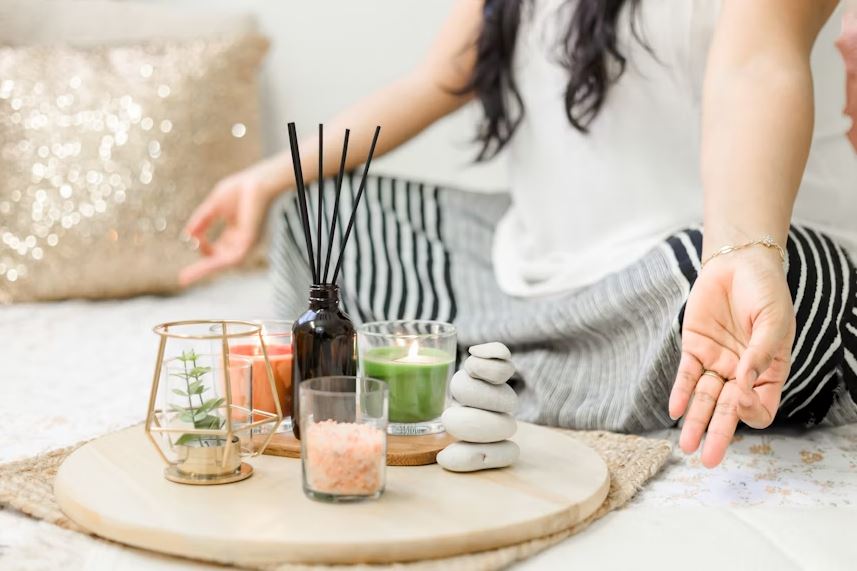Meditation may sound intimidating at first, but it’s actually one of the simplest practices you can bring into your life. You don’t need special tools, hours of silence, or prior experience to get started. What you do need is a little patience, curiosity, and a willingness to sit quietly with yourself.
If you’ve ever felt stressed, distracted, or overwhelmed, meditation can be a valuable skill to calm your mind and bring more balance to your daily routine. This guide will walk you through the basics of meditation step by step so you can start practicing with confidence.
Why Try Meditation?
Before diving into the steps, it’s helpful to understand why meditation is worth your time. Some benefits of regular practice include:
- Reduced stress and anxiety
- Better concentration and focus
- Improved emotional balance
- More restful sleep
- Increased self-awareness
Even a few minutes a day can lead to noticeable improvements in how you feel and respond to life’s challenges.
Step 1: Choose a Quiet Space
Find a calm environment where you won’t be disturbed. It doesn’t have to be completely silent—soft background sounds like birds chirping or distant traffic are fine. What matters is that you feel comfortable and relaxed.
- Turn off your phone or put it on silent.
- Sit in a spot where you feel at ease, such as a chair, cushion, or yoga mat.
- If possible, choose the same spot each day to create a sense of routine.
Step 2: Get Comfortable
Meditation isn’t about sitting perfectly still in a difficult position. Comfort matters.
- Sit upright with your spine straight, shoulders relaxed.
- Place your hands on your lap or knees.
- If sitting is uncomfortable, you can lie down or even try meditation while walking.
The key is to stay alert but relaxed.
Step 3: Focus on Your Breath
The simplest way to begin is by paying attention to your breathing.
- Close your eyes gently.
- Notice the natural rhythm of your inhale and exhale.
- Feel the air entering through your nose, filling your lungs, and leaving your body.
- Don’t try to control your breath—just observe it.
Breath is your anchor, bringing your attention back whenever your mind wanders.
Step 4: Acknowledge Wandering Thoughts
It’s natural for your mind to drift. You might think about tasks, worries, or random memories. This doesn’t mean you’re failing—it means you’re human.
- When you notice your thoughts drifting, gently bring your focus back to your breath.
- Don’t judge or criticize yourself. Treat each distraction as part of the practice.
- Over time, your ability to return to focus will improve.
Step 5: Start Small
You don’t need to meditate for long sessions at first. Even 5 minutes a day is a great start.
- Set a timer to avoid worrying about the clock.
- Gradually increase your practice to 10 or 15 minutes as you feel more comfortable.
- Consistency is more important than duration.
Step 6: Try Guided Meditations
If sitting in silence feels difficult, guided meditations can help. These are audio or video sessions where a teacher gently leads you through the practice.
- You can find free guided sessions on apps like Insight Timer, Headspace, or YouTube.
- Experiment with different styles such as body scans, loving-kindness, or mindfulness meditation.
- Follow along until you feel confident practicing on your own.
Step 7: Be Consistent
Meditation is like exercise—the more you do it, the stronger the benefits.
- Try to practice daily, even if it’s just a few minutes.
- Choose a regular time, such as first thing in the morning or before bed.
- Remember, it’s better to meditate for 5 minutes each day than 30 minutes once a week.
Step 8: Explore Different Techniques
Once you’re comfortable, explore other meditation styles to see what resonates with you:
- Body scan meditation – Focus on relaxing each part of your body.
- Mantra meditation – Repeat a calming word or phrase.
- Visualization – Imagine a peaceful scene to promote calm.
- Walking meditation – Practice mindfulness while moving slowly.
Each technique has unique benefits, and variety can keep your practice fresh.
Step 9: Be Patient With Yourself
Meditation isn’t about achieving instant peace or emptying your mind completely. Progress is gradual, and every session is valuable—even if it feels messy.
- Some days will feel easier than others.
- Your mind may wander constantly, and that’s okay.
- What matters is showing up and practicing.
Step 10: Notice the Benefits
Over time, you’ll likely notice small but meaningful changes:
- You may feel calmer in stressful situations.
- Concentration and decision-making may improve.
- You might find it easier to sleep and relax.
- Your relationships could benefit from increased patience and understanding.
These changes often appear gradually, so reflect on your progress regularly.
Common Mistakes Beginners Make
- Expecting immediate results.
- Thinking meditation is about stopping thoughts completely.
- Meditating only when stressed instead of building a daily habit.
- Being too hard on themselves when the mind wanders.
Avoid these pitfalls by keeping your expectations realistic and focusing on consistency.
Conclusion
Meditation is a simple yet powerful tool to bring more calm, clarity, and balance into your life. As a beginner, all you need to do is start small, be consistent, and approach the practice with patience. Remember—it’s not about doing it perfectly, but about showing up each day and giving yourself a few minutes of mindful presence.
With time, daily meditation can transform not just your mind, but the way you experience life.

